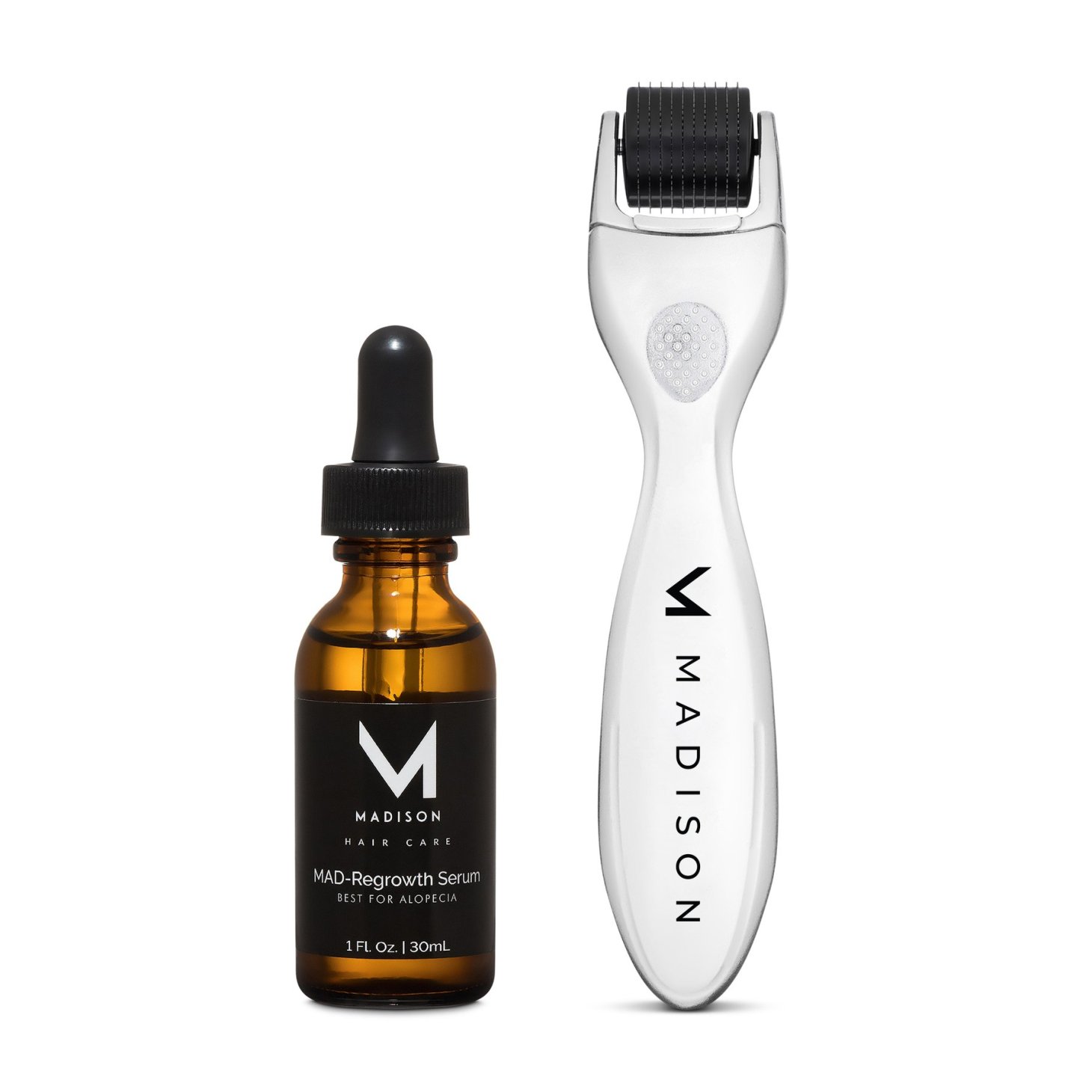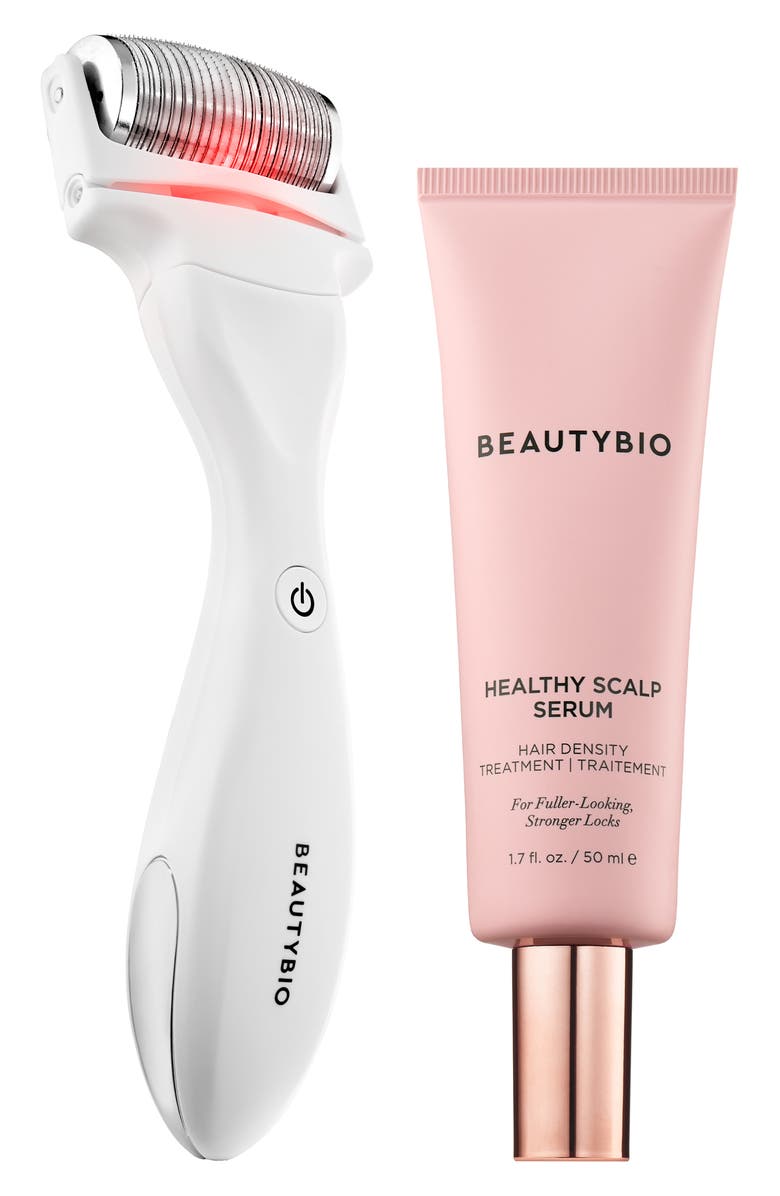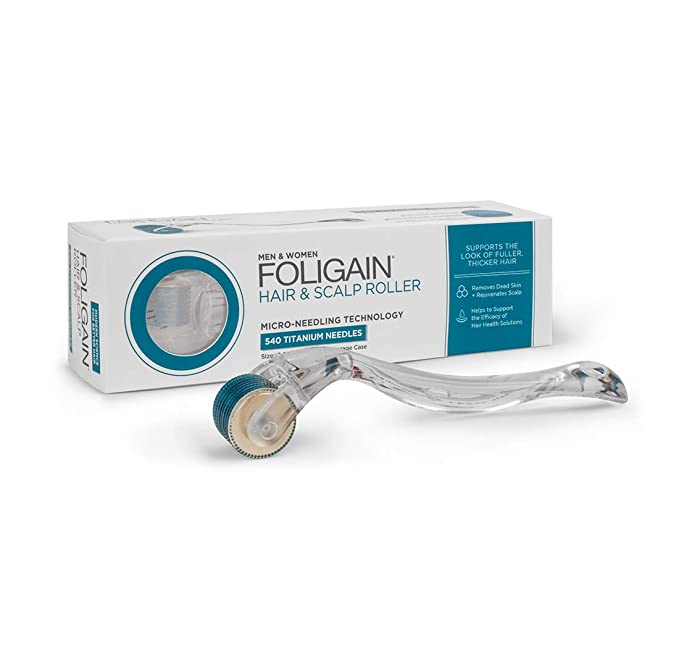Microneedling Your Scalp Is a Little-Known Trick To Promote Hair Growth
We're living in a golden age of hair-growth products. As an increasing number of women have started to deal with shedding, the industry has stepped up to offer science-backed serums that really work to help combat the problem. But though many of these topicals are great on their own, there's an easy way to get them to do their jobs even more efficiently—and that's where scalp microneedling comes in.
What is scalp microneedling?
Chances are, you're already familiar with microneedling as it relates to facial care. The devices are covered with hundreds of teeny, tiny needles, which create micro-tears in your complexion to deliver a range of skin-benefiting results (we promise, it doesn't hurt). "Microneedling is an aesthetic procedure in which miniature needles roll over the skin to penetrate the stratum corneum, or the outermost layer that contains dead skin cells," Neil Sadick, MD, of Sadick Dermatology in New York, previously told Well+Good. "The minuscule wounds stimulate collagen production and allow deeper penetration and absorption of topical products."
- Maya Vincent, Maya Vincent is the founder and CEO of Madison Haircare, a line that specializes in developing products for women dealing with alopcia
- Mona Gohara, MD, board-certified dermatologist at Dermatology Physicians of Connecticut and associate clinical professor in dermatology at Yale School of Medicine
When you roll them over your scalp, the same principles apply. "It's pricking the area to get the blood flowing and create a better area so that whatever topicals you're using can get way down deep into the scalp where it can help the hair grow," says Maya Vincent, founder of Madison Haircare, a hair-care brand that specializes in developing products for women with alopecia. "With this, it's allowing any hair-growth products you're using to work better."
Mona Gohara, MD, a board-certified dermatologist based in Connecticut, confirms that the treatment really does work, and a 2014 study backs up these lofty claims. In addition to stimulating collagen and helping your products penetrate more deeply, researchers also found that microneedling can help stimulate stem cells and growth factors, both of which promote hair growth.
{{post.sponsorText}}
While there are many ingredients out there for hair growth, the only one the FDA has approved to help with hair regrowth is minoxidil. While minoxidil is effective, it's worth noting that you have to use it forever for it to continue working because once you stop, it stops too. For best results, pros suggest using your microneedling device before applying growth serums with ingredients like minoxidil, because, as mentioned, it helps the products to sink in deeply.
Dr. Gohara notes that microneedling is also effective when used in combination with platelet-rich plasma (PRP), which involves using plasma from your own blood to draw stem cells to the area you're microneedling (you may have heard of it in the context of the "vampire facials" that went viral a few years ago). Of course in this case, you'll want to leave the treatment to the hands of a professional.
Does it work with all types of hair loss?
Though scalp microneedling for hair growth is legit, it may not be the best option for everyone. "The only time you should be using a microneedling device on your scalp is when there's a clean bald spot that's at least as big as a quarter where there is no hair growing," says Vincent. Otherwise, you run the risk of getting the device tangled in your (already thinning) hair and ripping even more of it out. With that in mind, she names people with traction alopecia or alopecia areata as great candidates for scalp microneedling, and it's been found to be effective in treating hair loss in both situations. Those with diffuse shedding or hair that is simply sporadically growing in areas are ,on the contrary, not great candidates.
How to microneedle your scalp
While you can certainly book an appointment to get your scalp microneedled at the hands of a derm (especially if you want to go the PRP route), Vincent says it isn't always necessary. You'll get the same results if you do it at home... as long as you're doing it right.
First things first: "Always make sure your hair is clean," says Vincent. She explains that using a microneedling device on a dirty scalp will allow whatever dirt and oil are hanging around to work their way into the microtears in your skin. "It would be like microneedling your face with makeup on it—all that makeup would get into your pores," says Vincent. "In that same vein, you don't want those oils from your hair to get into your scalp."
She suggests using the tool three times a week, and applying your hair growth serum of choice immediately afterward (it's worth noting that you can—and will probably want to—use your growth serum even on days when you aren't microneedling). Over time, you'll be able to reap their usual benefits and then some.
Shop scalp microneedling tools

This scalp microneedling device—designed by Vincent herself—works alongside a hair regrowth serum that inhibits DHT (a hormone that shortens your hair’s growth cycle and shrinks the follicle) to protect and strengthen strands.

The makers of one of the most beloved facial microneedling tools on the market have brought their expertise to the scalp with this set. It includes a specialized microneedling tool designed to hug the natural contours of your scalp, plus a Healthy Scalp Serum that dissolves product buildup, balances oil production, and soothes itching while also promoting hair density.

Pair this no-frills roller (which you can snag for $15 at the drugstore) with your favorite scalp serum. Together, they’ll work even more effectively to promote hair growth.
For more tips on how to deal with hair loss, check out the video below.
Want even more beauty intel from our editors? Follow our Fineprint Fineprint Instagram account) for must-know tips and tricks.
Loading More Posts...